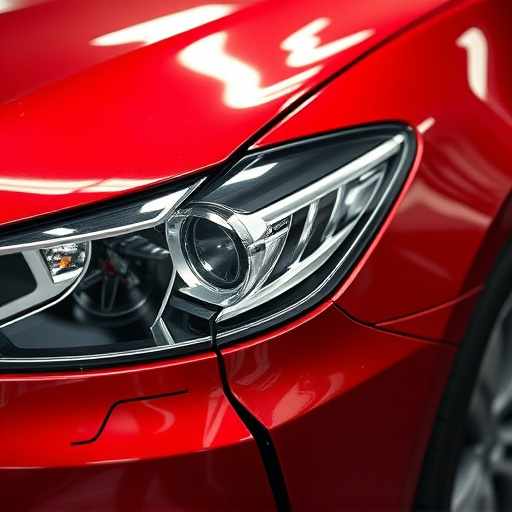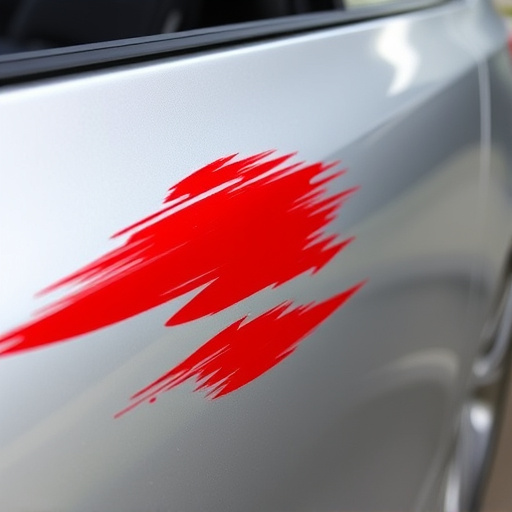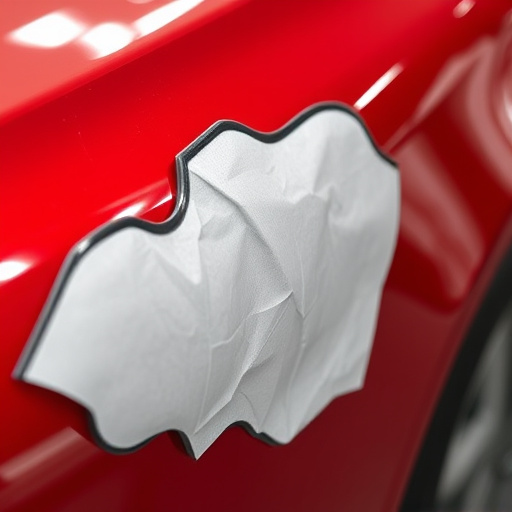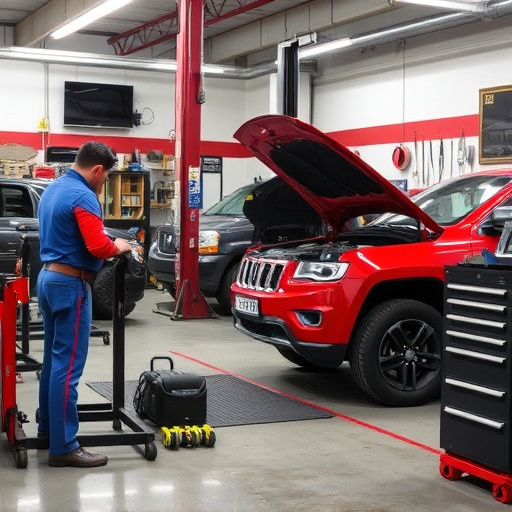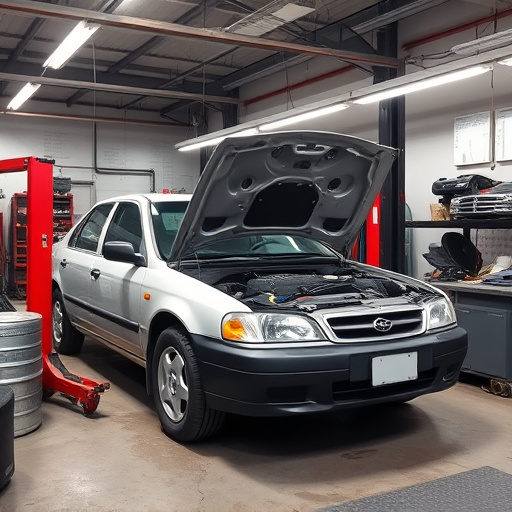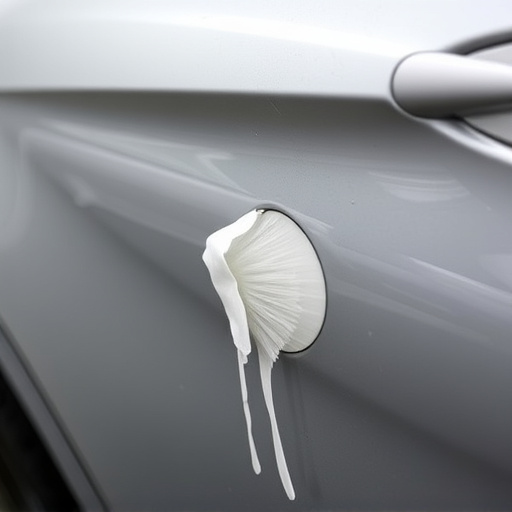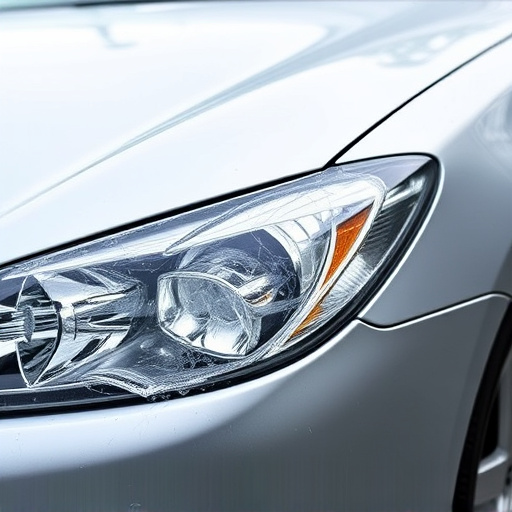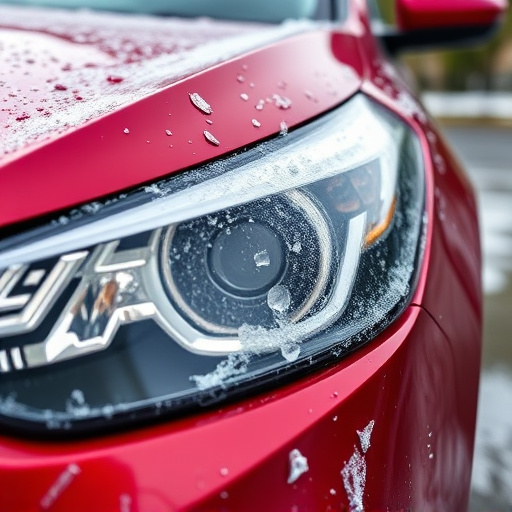Tesla composite repair is a specialized service requiring advanced techniques and certified technicians to maintain the iconic vehicle's lightweight strength and sleek design. For minor damage, a specialized epoxy fills and seals cracks, while severe damage may need panel removal and professional dent pulling. Regular washing, wax/sealant application, and inspections are crucial for preserving the aesthetics and long-term integrity of Tesla composite repairs.
Tesla owners often face the dilemma of maintaining their vehicle’s sleek, composite surfaces. This article is your comprehensive guide to Tesla composite repair, focusing on cracks and surface damage. We’ll delve into the unique properties of Tesla’s composite materials and the specialized repair process required. Additionally, we provide a step-by-step manual for effective repairs and essential tips for post-repair maintenance, ensuring your Tesla retains its distinctive beauty. Discover expert advice tailored to Tesla composite repair.
- Understanding Tesla Composite Materials and Their Unique Repair Process
- The Step-by-Step Guide to Effective Composite Repair for Cracks and Surface Damage
- Tips and Best Practices for Maintaining Composite Surfaces Post-Repair
Understanding Tesla Composite Materials and Their Unique Repair Process

Tesla vehicles are renowned for their innovative use of composite materials, which offer lightweight strength and a sleek design. Understanding how to repair these unique materials is crucial for maintaining the vehicle’s integrity and aesthetic appeal. Tesla composite repair goes beyond traditional auto body painting and auto frame repair techniques due to the specialized nature of these advanced composites.
The process involves careful inspection, precise cutting, and strategic bonding to match the original specifications. Certified technicians employ advanced tools and resins specifically designed for Tesla composites, ensuring a durable and seamless repair. This method, distinct from standard body shop services, preserves the vehicle’s structural integrity while restoring its damaged exterior to like-new condition.
The Step-by-Step Guide to Effective Composite Repair for Cracks and Surface Damage
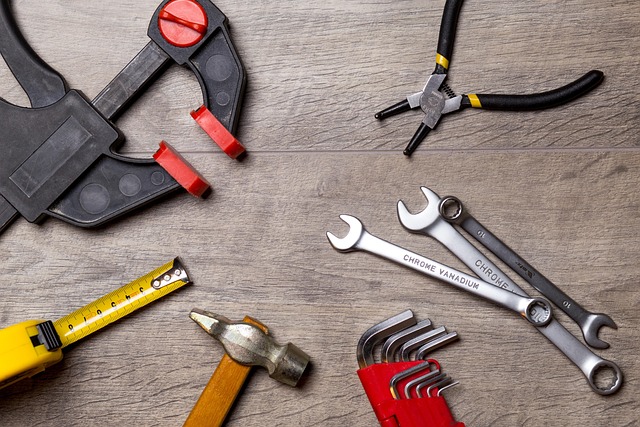
Effectively repairing cracks and surface damage on Tesla composite bodies involves a meticulous step-by-step process. First, assess the extent of the damage, which could range from minor cracks to significant dents or scratches. For slight cracks, use a specialized epoxy designed for composite materials to fill and seal them, ensuring a strong bond. Once the crack is filled, sand the area gently to achieve a smooth surface, then apply a coat of primer to match the vehicle’s original finish.
For more severe damage like dents or deep scratches, consider taking your car to a reputable auto repair shop specializing in Tesla composite repair. They’ll begin by removing the damaged panel for a thorough inspection and precise measurements. Next, they might use a fender repair technique involving heat application and specialized tools to gently pull out dents while preserving the surrounding composite material integrity. After repairs, a meticulous car body restoration process ensures your Tesla looks as good as new, with flawless finishes and seamless composite surfaces.
Tips and Best Practices for Maintaining Composite Surfaces Post-Repair

After successfully completing Tesla composite repair for cracks and surface damage, proper maintenance is key to preserving the sleek and modern look of your vehicle’s composite surfaces. Regular washing with a dedicated car shampoo and soft microfiber cloths helps remove dirt and grime without damaging the repaired area. Avoid using abrasive washes or sponges that could scratch the composite material. Additionally, applying a high-quality wax or sealant post-repair creates a protective barrier against UV rays, bird droppings, and other environmental hazards commonly responsible for further damage to car body repair work.
For optimal vehicle bodywork care, keep composite surfaces dry as much as possible, especially in regions with high humidity levels. If your Tesla experiences water damage or leaks, address the issue promptly to prevent moisture seeping into the composite structure—a common cause of long-term issues for vehicle dent repair. Lastly, be mindful of exposing composite surfaces to extreme heat, such as from sun lamps or hot exhaust pipes, which can weaken the material over time. Regular inspections and maintenance will ensure your Tesla’s composite repair remains in top condition.
Tesla composite repair is a specialized process that effectively addresses crack and surface damage on these innovative vehicle bodies. By understanding the unique properties of Tesla’s composite materials and following a meticulous step-by-step guide, technicians can achieve superior results. Implementing best practices for post-repair maintenance ensures the restored surface remains protected and vibrant. With the right approach, Tesla composite repair not only restores aesthetics but also maintains the structural integrity of these modern vehicles.
